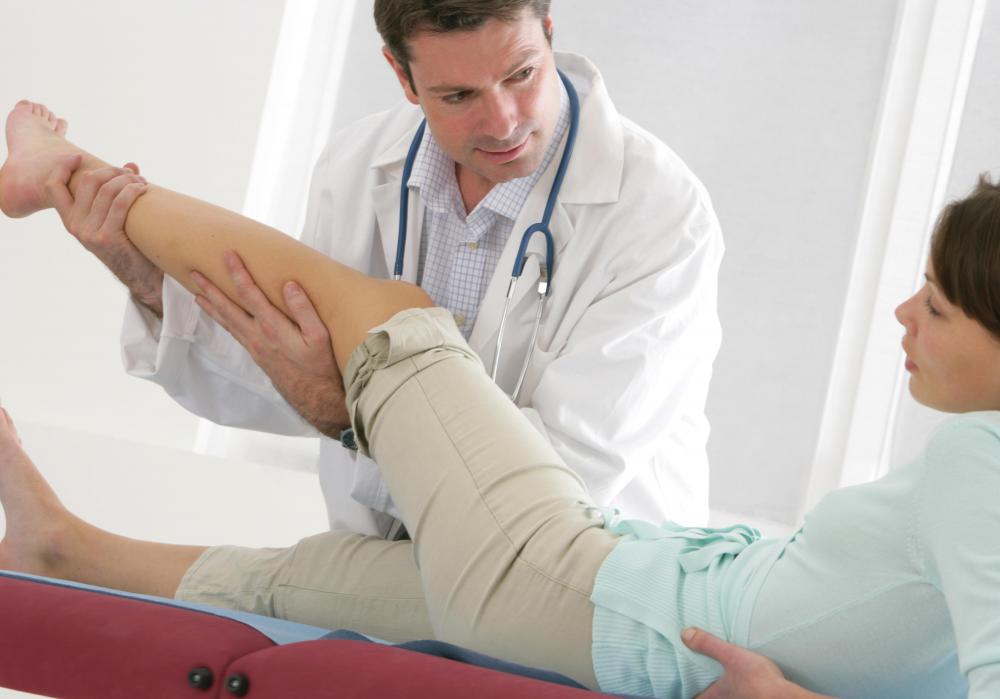At WiseGEEK, we're committed to delivering accurate, trustworthy information. Our expert-authored content is rigorously fact-checked and sourced from credible authorities. Discover how we uphold the highest standards in providing you with reliable knowledge.
What Causes a Calf Muscle Spasm?
Of all the muscles in the body, the muscles in the legs are the most likely to spasm. Calf muscles in particular are likely to spasm, as they are one of the most used sets of muscles and are responsible for a good portion of regular movement during athletic activities. A calf muscle spasm, like other muscle spasms, can be caused by several factors, including dehydration, participating in a new activity that the muscles are not prepared for, poor conditioning, and sudden and unexpected burdens being placed on the muscles. A calf muscle spasm usually needs to be stretched out by hand, and it can range from very slight to very painful.
When a calf muscle spasm occurs, the muscle tenses involuntarily, causing pain in the calf. The person suffering from the calf muscle spasm will most likely become debilitated by it until he or she stretches the muscle out by hand. Such spasms are more likely to occur either at the beginning or at the end of a workout; at the beginning of a workout, the muscles are not limber and may not be ready for use, and at the end of a workout, the muscles may be depleted of electrolytes and sufficient oxygen. An athlete should pay special attention to these parts of a workout and prepare the muscles by stretching appropriately and staying well hydrated.

Most occurrences of a calf muscle spasm can be avoided by proper conditioning. Adhering to a regular regimen of stretching both before and after physical activity will help condition the muscles for regular use, and staying hydrated during exercise will also ensure the muscles are healthy. A calf muscle spasm can still occur, however, despite conditioning and preparation. If it does happen during physical activity, one should stop the activity immediately and stretch the muscle by hand. It helps to sit in a position that allows the legs to stretch naturally as well. Lightly massaging the muscle can help ease away some of the pain as well.

Before any athletic activity, the athlete can perform a series of calf and hamstring stretches to prepare the muscles for use. The easiest of these stretches is the heel drop, in which the athlete finds a raised platform such as the first step in a stairway. He or she will stand on the first step using just the balls of the feet. The heels will hang off the step. The athlete can then drop the heels downward while keeping the legs straight, thereby stretching the calf muscles.
AS FEATURED ON:
AS FEATURED ON:














Discuss this Article
Post your comments